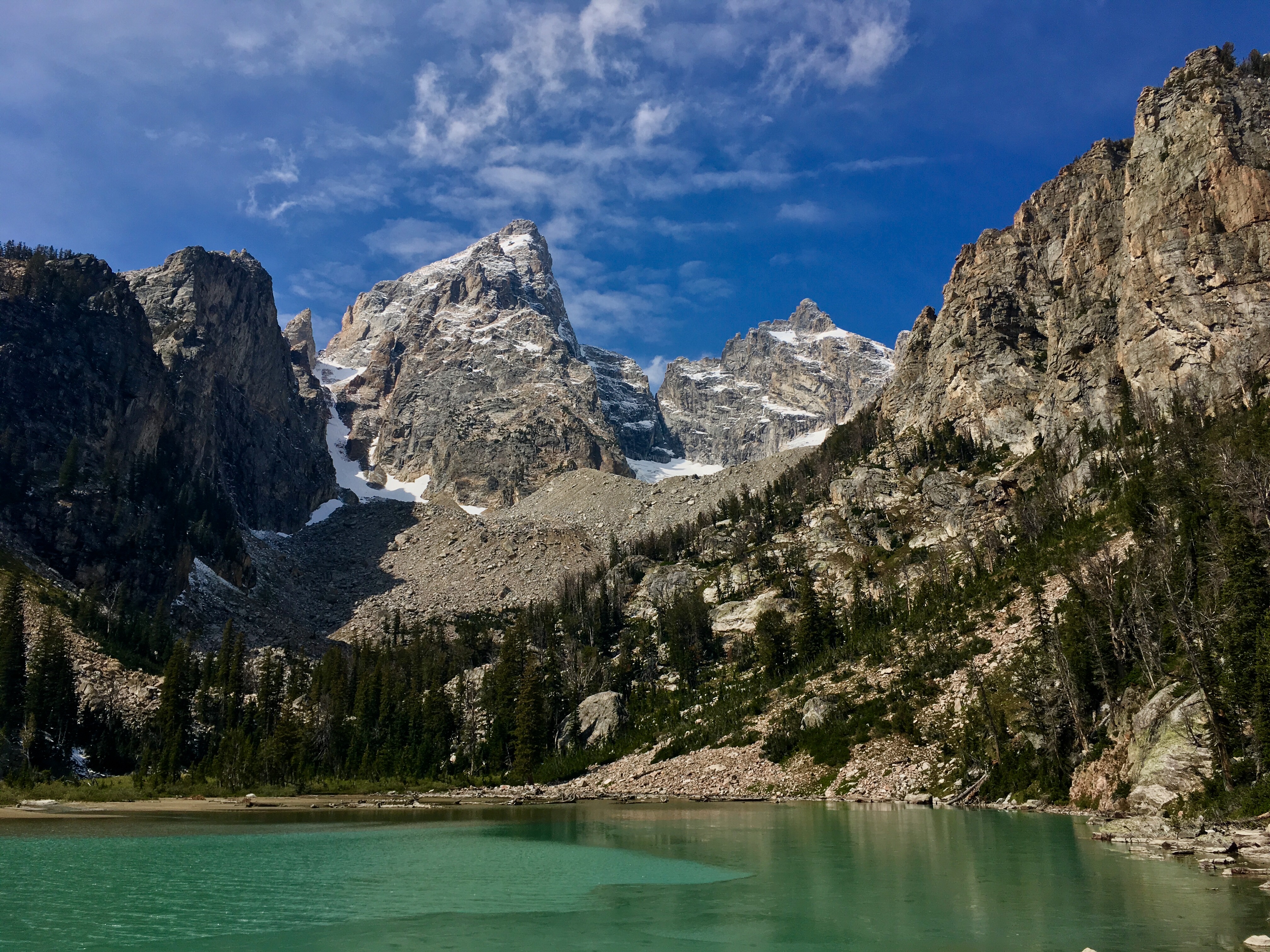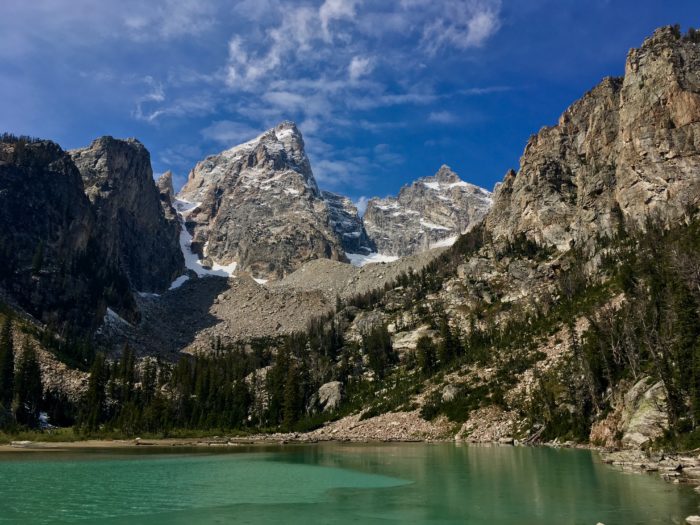
The month of September brings seasonal change, smoke in the air, local earthquakes and snow in the high country.
September begins smoky with reduced air quality. No big fires burn near Jackson Hole but the western United States is experiencing the worst fire season ever. 74 major wildfires burn in eight western states. Oregon has fires burning the size of Rhode Island. The local smoke is probably from Pocatello, Idaho and Glacier National Park, Montana.
A change in wind direction or rain dampers the smoke but you know the fires are still raging. Fires play an important role in forest ecology but always a challenge when so much acreage burns. Snowfall will help control these fires and Mother Nature’s assistance is needed.
On our guided hikes (www.holehike.com), clients question the role of fire. Fires rejuvenate the forest with nitrogen and phosphorous. The nutrients allow more vegetation to grow as sun begins to reach the forest floor. Hot fires are an issue as they burn deep within the soil and kill all roots. As we look to the future, we must realize the importance of fire and manage the forest for diversity. As decisions are made, changes in fire behavior must be considered as climate gets hotter and drier.
Living within the Rocky Mountains makes earthquakes probable. On September 6, 2017, a 5.4 magnitude earthquake shook Soda Springs, Idaho. Idaho has numerous fault lines and 141 small quakes occurred in early September. The last big quake was 1983 with a magnitude of 3.6 and quakes are felt about every five years (phys.org).
Jackson Hole hasn’t experienced a large earthquake in years but we have had an earthquake in the last week. At Earthquaketrack.com, a magnitude earthquake greater than M1.5 has occurred this past week with 69 earthquakes over the last 30 days. They are often not felt and it is good to release pressure along the faults. More pressure means bigger quakes so lots of small ones are a benefit.
September is mating season for many of the large animals. It’s the month that bull elk bugle to harem or gather the females. Peak mating occurs at the Autumnal Equinox or first day of fall. It occurred on September 22 at 2:02 PM. It is a great time of the year to drive the Moose-Wilson Road in Grand Teton Park to listen to the elk and look for the bears gorging on the Black Hawthorn berries.

September also brings snow to the Tetons. By mid-month, the peaks shine with fresh snow. It’s the time to get out and play. Fall colors begin to thrive by the end of the month and morning temperatures resemble November. The month has been sunny, wet and cold. Old Man Winter will arrive to stay at any time.
What’s in the woods
9/7- Leland, Michigan- pileated woodpecker, bald eagle, mallards, grebe, mergansers
9/9- smoky valley
9/10- Phelps Lake- small brown bear, flicker, stellar jay, engleman aster
9/10- Teton Village Road- bald eagle on power pole
9/17-Wilson, wy- moose calves
9/17- Glacier Gulch- mountain ash berries, clark’s nutcracker, turkey vulture
9/23- Munger Mountain- rose hips, wooly bear caterpillar,
9/25- Wilson, WY- herd of elk- bull with about 30 females
Tour Suggestion
Choosing an activity is weather dependent and trails will be muddier at the snow line. Fall is a great time to ride the bike paths, drive the Snake River Canyon to look at fall colors or the Moose-Wilson Road to look for wildlife. Lower elevation hikes such as the LSR preserve, Bradley/Taggert, Sting to Leigh Lakes are fun options in Grand Teton Park. Visiting Lupine Meadows or Whitegrass Ranch are great spots to listen to the bugling elk. Some locals have even skied on Teton Pass but a bit early if you ask me. Have fun and enjoy the transition to fall!


